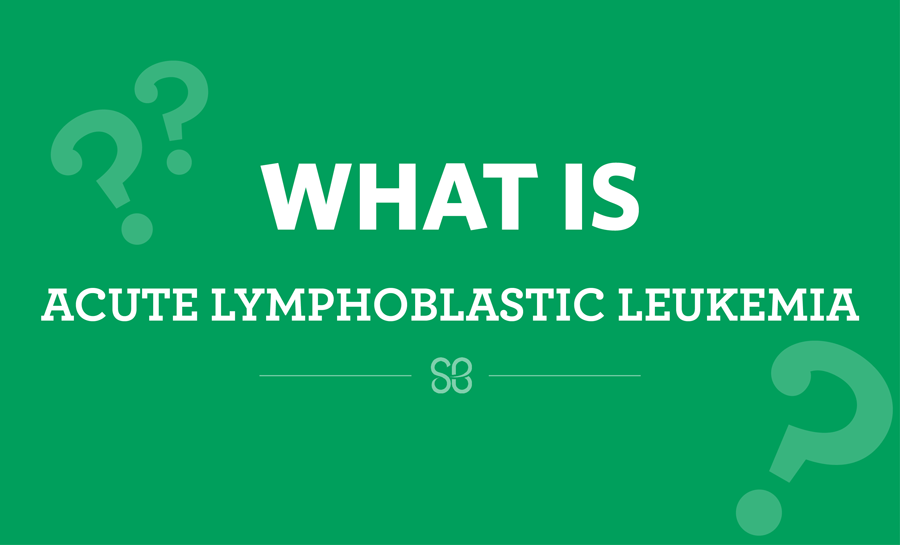
What is acute lymphoblastic leukemia?
Acute lymphoblastic leukemia (ALL) is a cancer of the white blood cells that normally fight infection. The cells do not grow and develop properly, filling up the bone marrow inside bones, where blood is normally made.
ALL is the most common type of childhood cancer, accounting for 35% of all cancers in children. Each year, there are about 2,900 new cases of children and adolescents diagnosed with ALL in the United States alone.
See how Phineas survived ALL because of research supported by St. Baldrick’s >
Its signs and symptoms resemble other common illnesses, which often leads to other treatments before the leukemia diagnosis is made.
What are the signs and symptoms of ALL?
- A low number of red blood cells leads to anemia, making the child feel tired or weak. Children may also experience shortness of breath and may look pale.
- A low number of white blood cells that fight infection cause the child to get fevers or infections that are hard to treat.
- A low number of platelets that control bleeding make the child’s cuts heal slowly, and they may bleed or bruise easily.
- A high number of leukemia cells can cause bone pain and swelling of the joints.
How is ALL diagnosed?
Tests that examine the blood and bone marrow are used to diagnose childhood ALL.
What treatment options are available for children with ALL?
Types of treatment differ for childhood ALL based on a patient’s risk group. A doctor will determine if the patient is standard (low) risk, high risk, or very high risk and make treatment decisions accordingly. This helps to give survivors a better quality of life by not subjecting them to more toxic treatments than are necessary.
Treatment options also vary according to the specific sub-type of ALL. These sub-types include B-cell, T-cell, Philadelphia chromosome positive and others.
Treatments for ALL may include:
- Chemotherapy: a cancer treatment that uses drugs to stop the growth of cancer cells, either by killing the cells or by stopping them from dividing.
- Radiation Therapy: a cancer treatment that uses high-energy x-rays or other types of radiation to kill cancer cells or keep them from growing.
- Stem cell transplant: After a patient completes chemotherapy and radiation therapy a stem cell transplant may be performed. In a stem cell transplant, stem cells are taken from a matched donor and transplanted into the patient to form new blood cells in the body.
- Targeted Therapy: a cancer treatment that uses drugs or other treatments to find and attack cancer cells while leaving normal cells unharmed.
- Immunotherapy: therapeutics that stimulate the patient’s immune system to recognize and attack cancer cells.
How is research helping to fight this type of cancer?
In the 1950s, an ALL diagnosis was almost always fatal. But now, thanks to advances in childhood cancer research, the 5-year survival rate is about 90% for kids younger than 15, and 75% for adolescents aged 15 to 19.
Researchers now are working hard to find cures, and safer, less toxic treatments for all kids with ALL.
Learn about a groundbreaking St. Baldrick’s-supported therapy for kids with high-risk ALL >
Even with these advances, children’s whose leukemia comes back after an initial response to therapy too often die of their disease. Researchers are searching for effective treatments for these patients.
One of many such researchers is St. Baldrick’s Fellow Dr. Anya Levinson of University of California San Francisco. Dr. Levinson is studying a class of medicines used to treat ALL called glucocorticoids. These medicines are generally very good a killing leukemia cells, but some patients have been found to be resistant to them, making their disease far more difficult to treat. She is trying to understand how and why this resistance develops, to learn how to overcome such resistance and further increase overall survival in childhood ALL.
Dr. Levinson’s St. Baldrick’s Fellowship award was supported by the Ty Louis Campbell Foundation, a St. Baldrick’s partner, created in memory of Ty Louis Campbell who lost his battle with brain cancer at the age of five.
Read more on the St. Baldrick’s blog:

 SBF
Tweets »
SBF
Tweets »